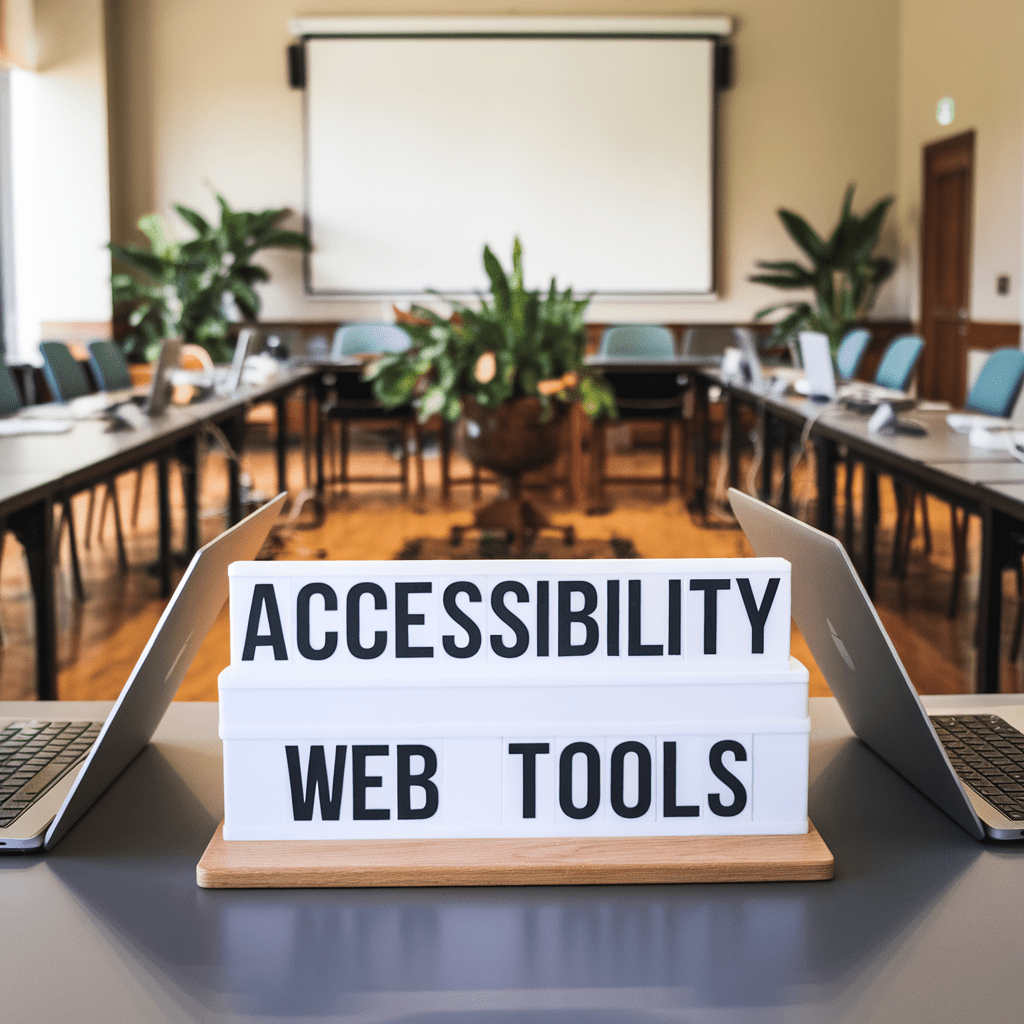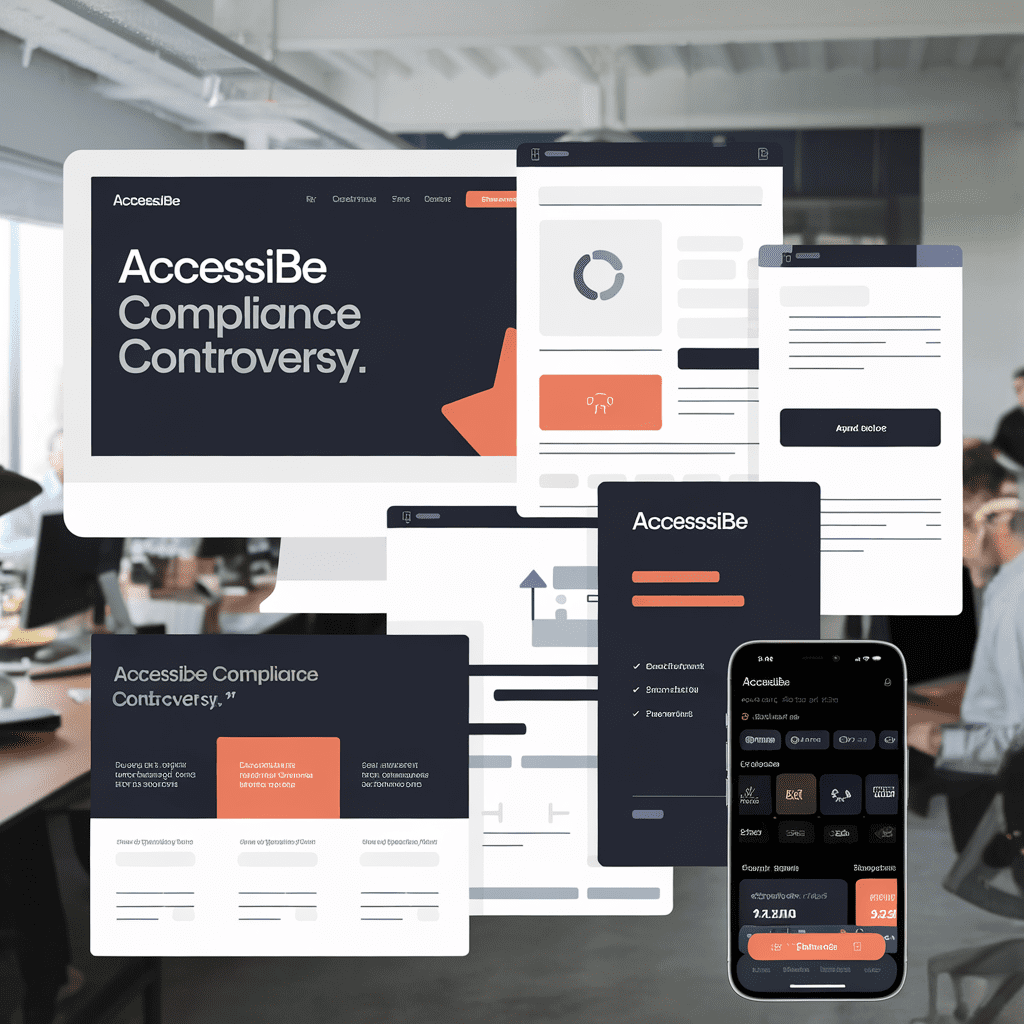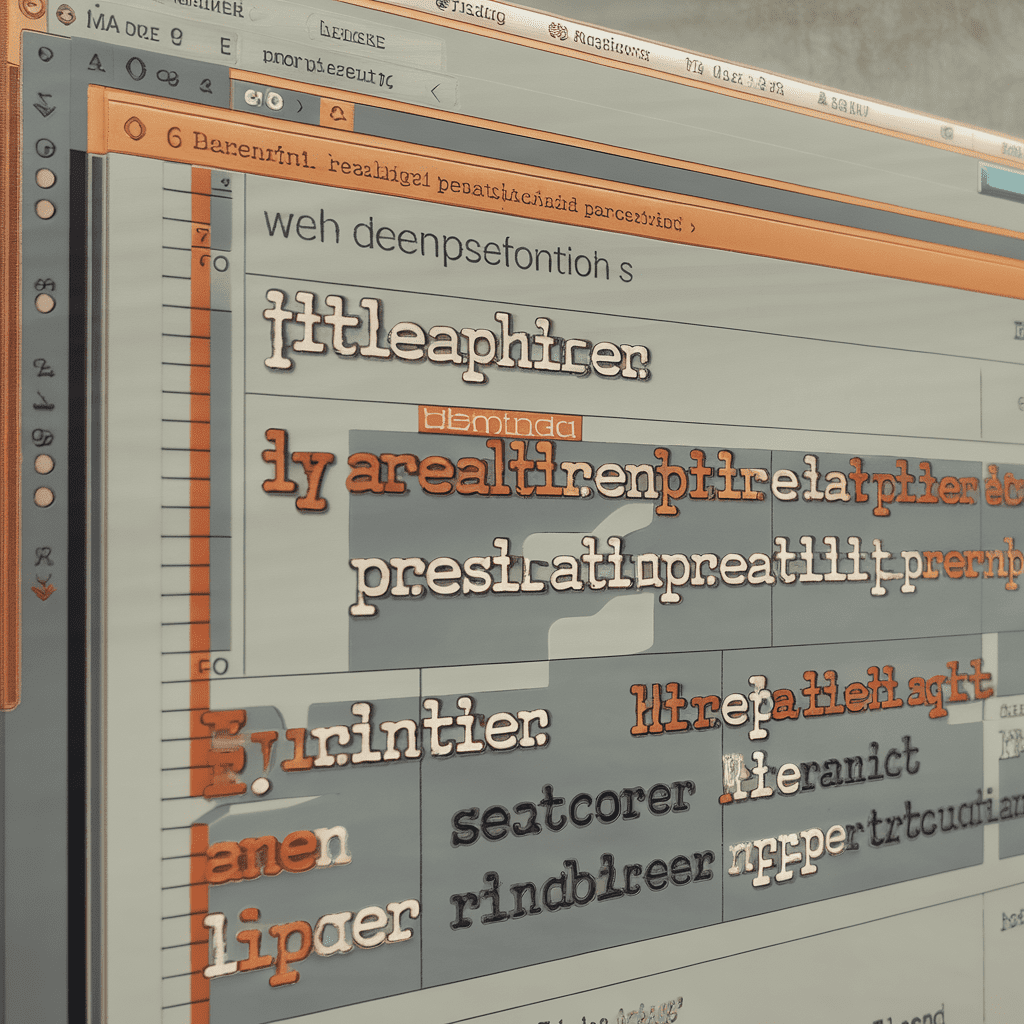
Ever pondered what life would be like if you had to navigate through it without some of our given senses? Mind-blowing, isn't it? That's what technology aims to overcome, specifically with the strides made in our oh-so-exciting domain—‘Accessibility Web Tools’. A lighter on the path forward for many who dare to delve into the digital sphere.
The world of Accessibility Web Tools can be a labyrinth–a series of left turns, right turns, and occasional dead ends. Success and frustration often become close companions. Fascinating? Absolutely! Troublesome? Sometimes. But Sherlock Holmes-esque mind-bending mysteries have their perks too because solving them can do wonders beyond your imagination!
You're inevitably curious about the struggles and victories encountered in this expedition within web tools, aren't you? I promise, what you're about to read is no fairytale. It's the good, the bad, the high tides, the low currents, and most importantly—the everyday learnings of folks who dared to fail then sailed towards success with undying resilience.
Let’s step into their shoes and embark on this ride, woven with real-world stories that paint an exhilarating panorama of challenges tackled, strategies turned magical potions (no exaggeration here!), hard-earned triumphs, and lessons bookmarked for breezier explorations ahead. Trust me; it’s going to be one heck of an adventurous dive! So buckle up, dear friends, because isn't life too short for unexciting reads? Let this be your voyage into the marvel that is Accessibility Web Tools.
Background: Understanding the Need for Accessibility Web Tools
Imagine attempting to bake a cake in a kitchen stocked to the gills with ingredients but, oh dear, missing a spoon to stir them together, or a tin to pop it in the oven and produce that magnificent, gooey chocolate goodness. That's essentially trying to navigate today's complex cybersecurity leader board without Accessibility Web Tools! The sighs of frustration are profound and many, just like our non-existent cake. Today's webverse is a stormy sea. Digital entities washing ashore constantly. With great technology comes great responsibility, right?
Picture being color-blind and attempting to play an exciting new online blockbuster game, "Planet Mars Invaders", while saddled with inaccessible web tools? Unthinkable! Just as our hapless Mars adventurer would find photons raining down soundlessly because they don't discern contrasting colors, internet users with different forms of disabilities are often left in a similar rut—invisible to tech firms cultivating sleek features over inclusive design value.
Yet, companies like “Innovate-A11yTech” are revolutionizing this scene. They faced an uphill task—millions of people suffering silently, untouched by the fourth industrial revolution, simply due to poor user-centric online tool variations. Inspired by personal stories filled with a colorful spectrum of resilience and strength turned despair by an unaccommodating digital ecosystem—as they discovered—the company began to shift their paradigm about accessibility web tools. They realized this wasn't just about upgrading coding matrices – it was about carving code into bridges connecting otherwise disconnected human experiences across cyberspace.
Popping back on our interplanetary trek: the breakthrough came when they integrated changes on different testing phases; “Planet Mars Invaders” catapulted into alternative text descriptions, enhanced ARIA, labeled images ensuring contrasting ratios and Accessible PDFs! Messages REMEMBER THIS: Progress was literally written in eye-catching capital letters across the digital dominion!
Essentially, in helping to reignite the sparkle in creative pursuits and boosting interplanetary triumphs for our Martian heroes, Innovate-A11yTech’s focused utilization of accessibility web tools denotes a collective step to a more conducive and compassionate digital ecosystem to all. Carving out such case studies makes us envision solutions as metaphorical 'hoverboards'; each innovative design rendition propulses users one step ahead, cutting through the sea of digital hurdles, enabling smoother and more meaningful navigations.
If you're wondering about this digital leap jump analogy, just remember— in our case study, a dash of simple empathy combined with thoughtful accessibility and usability solutions turned overnight into the magic spoon that stirred not just the cake but millions of hopeful, brighter futures! So why not give “Accessibility Web Tools” a whirl in your own impressive tech-saga? Who knows what digital GmbH-free goodness awaits. Let's unlock compassion using nothing but zeros and ones, shall we?
Challenges Faced: Overcoming Barriers in Implementing Accessibility Solutions
Building on the insights shared earlier, we've found that implementing accessibility solutions isn't as straightforward as it sounds. There are bumps on the quest to create an accessible web for everyone. A powerful ally in this journey is the arsenal of Accessibility Web Tools—yet, wielding them effectively requires tact.
Consider the story of Software Giants Inc., dead set on making their website accessible to all users. They were dauntless, embracing this noble cause — a lifeline to encourage widening their community, boost their brand’s credibility, and foster a global spirit of inclusiveness. However, their ambitions first led them into the thick woods of Accessibility and Usability issues.
Software Giants Inc.’s initial challenge was understanding WCAG and ARIA roles, both vital elements of Accessibility Web Tools realm. It was like trying to understand a foreign language for the first time – daunting, right? They experienced difficulties implementing alternative text and struggled to create accessible PDFs. Consequently, achieving an ideal contrast ratio for better website usability seemed more like scaling Mt. Everest without a guide.
Unraveling these challenges bit by bit almost made Software Giants Inc. Felt like their quest was a Gordian Knot. They knew they needed websites to comply with WAI guidelines, yet how to decode the accessibility language was not instantly apparent.
Choosing to pull back the curtain on these befuddling problems, they adopted a resilient egos-aside approach that really changed the game. By seeking professional help for utilizing Accessibility Web Tools effectively, they made a catalyst decision.
Are you also swirling around in a tornado of accessibility issues with your website? Well, who isn't? Just remember: exploration is where discovery happens! Stand with us as we move forward through the tangled undergrowth of web accessibility together. You're not alone on this quest – if Software Giants Inc. can re-route their journey towards success, why wouldn’t you give this a whirl? After all, it might just land you somewhere over the accessibility rainbow! Stay clear-eyed and hopeful: every hearty challenge is a stepping stone to victory.
Strategies Implemented: Leveraging Accessibility Web Tools for Improved User Experience

Moving forward in our journey, let's dive into the deep end of this stratagem. In an age overrun with technologies, we came across a sticky wicket—accessibility issues on the internet for people with disabilities. It was like walking through a dense forest, swatting mosquitoes and stumbling over logs. But then we found our survival kit in Accessibility Web Tools. So, why not join this exciting quest and see what happened?
The team, initially grappling with usability hurdles such as broken website contrast ratios and oblique ARIA labels, equated these to bumps on what should be a smooth journey for users. Ever tried reading an instruction manual in candlelight without glasses? Pretty much feels the same, right? Now imagine an array of practical tools that bring clarity and guidance – that's exactly what Accessibility Web Tools do for web design.
Turning voids into bridges, these lifesavers entered the picture. And voila! There were drastic improvements in both accessibility and the user experience. For instance, alternative text for images had been a notorious cruiser blocking many paths. But by leveraging these tools, each picture told a thousand word-story to screen readers. HTML headings, once mere codes with no significance to humans, sprouted life – guiding users effortlessly around the web contents. In a nutshell, we fearlessly embraced accessibility as an ally, rather than an adversary.
Another feather in our cap was PDF accessibility fixes, which was almost like solving a Rubik's cube blindfolded. With the help of Web Accessibility Tools, we cracked it – making that significant documentation accessible boosted our site engagement like never before.
Conclusion? Weaving accessibility into our web design was no longer just a compliance checkbox. Our approach started echoing with our core web values: community building. Our website traffic skyrocketed, resonating with our ethos: offering everyone equal access to information they need within just a click or two. Now that’s lighting up a torch in the world of obscure corners, isn't it?
Results Achieved: Measuring the Impact of Accessibility Enhancements on the Website
Transitioning from our previous discussion, it's vital to reiterate that implementing accessibility web tools has a clear ripple effect. You'll see a change not just for your website usability but your overall community determination towards equality.
Let's look at a real-world success story.
Reflect on "MoonLab"- a petite startup who strove for accessible-web-design. Website accessibility was a Rubik's Cube they wanted to solve with elan! They stepped into the web-world with their website's Contrast Ratio barely meeting the necessary WCAG. Just as you'd put sunblock on before hitting the beach, they decided to instill necessary preventive measures early on. Sounding familiar so far?
What brought a paradigm shift was integrating top-notch Accessibility Web Tools. The ARIA and alt-text enhancements ensured an easier navigation for all users, addressing any potential accessibility or usability issues and increasing web traffic faster than a high-speed F1 race car! They successfully elevated their website experience into a very inclusive one, invoking conversations within their consumer base that touched upon usability and equal-access principles.
Let's do some number crunching while we sip our afternoon coffee: Almost 50% increase in website traffic, 20%+ rise in user-time spent on their website and an overall page-views spike of about 60%! Let's highlight this, folks–better accessibility does correlate with better conversions!
Our nifty friends at "MoonLab" perfectly embody the idea of building a community rooted in inclusivity. From letting blind readers in on the action with more accessible PDFs to providing those with impaired vision comprehensible color experiences thanks to their improved contrast ratio—they’ve got their bases meticulously covered!
Taking their lead, why not lean into this transformation? Let's together build an accessible web space where everyone, irrespective of their physical attributes or technological abilities, feels effortlessly integrated.
Just like how “MoonLab” turned their challenge into unanticipated successes, we reckon you'll do the same. After all, who doesn't love delivering web experience akin to serenading a DeBussy while serving a slice of accessibility webness! (Personal note: Can't play the piano…yet!)
Lessons Learned: Key Takeaways and Best Practices for Future Accessibility Initiatives
Continuing our exploration into the dynamic world of the web, we have encountered some fascinating twists and turns in our accessibility initiatives. Now that we've collectively navigated these unseen territories, it's crucial we highlight the bounty of knowledge unearthed by our very own 'Indiana Jones' styled expedition!
You remember the mainstream dictionary debacle, right? Their online tool turned out to have an Achilles' heel – some users found its fonts ill-suited for vision impaired individuals. Luckily for them, their savior arrived in the form of accessibility web tools, like contrast ratio checkers and alternative text accessibility.
Quite like knights in shining armour, these tools turned their unfortunate situation around. Web tools made accessibility enhancements as breezy as a walk in the park, focusing on key areas like alternative text functions (Alt Text) and accessible-rich internet applications (ARIA). Imagine treating the internet like a LEGO set – you can adjust each piece to match your preferences, swapping out tiny brick-sized issues for an all-accessible internet landscape.
This experience reinforces the importance of including accessibility web tools right from the drawing board when planning web designs. As they say, ‘prevention is better than cure’! Applying lessons from everyday situations into the digital sphere ultimately trail-blazes a path of universal access on the web.
It might resemble magic carpets and genie lamps, transforming your web design process into a more fluid masterpiece with inclusive user experience is achievable. Trust me, you'll be throwing your hands up in the air for a victory dance before you even know it! So why not give these lesson- enriched tools a whirl?
Let's pack these practical insights as we continue on our journey. Above all, remember: every adventurous leap you take to increase web usability is a powerful stride towards building a tighter knit digital community. Now, who wouldn't want that? Buckle up and let’s prepare to rock cyberspace. Upwards and onwards!
Conclusion
Well, folks, we've journeyed together through a digital odyssey – swapping insurmountable hurdles for accessible pathways using our trusty sidekick, Accessibility Web Tools. Who knew that creating an inclusive environment could so closely mirror an action-packed blockbuster, fraught with excitement at every corner?
Our tale, though laced with its fair share of beastly barriers, is definitely no tragedy. We squared up against giants like accessibility and usability issues, landslides most companies simply circumnavigate. Instead of adopting the ostrich approach (a head-in-the-sand bungle), we harnessed the power of Accessibility Web Tools and turned a battlefield of blockers into a welcoming oasis of inclusivity.
The sweet taste of success? We amped up website traffic while fanning the flames of community building. And let's not forget the findings – they weren't just Polaroid snapshots but robust blueprints for an accessible future. Knowledge, like a cup of joe, is more enjoyable when shared (hip flasks are good too!).
Take these key takeaways and tuck them in your back pocket. These shiny nuggets of know-how aren't pieces you want stashed in the attic! They're ready, and raring, to play an essential role pushing past challenges that may emerge ahead, like attempting to construct IKEA's Hemnes cabinet without any instructions… daunting, but possible!
Embody the spirit of Columbus braving the Atlantic: Challenge your own assumptions about accessibility, delve into this uncharted world armed with our case study compass, and rip open your own treasure troves of knowledge.
Yesterday, making websites accessible might have seemed akin to deciphering ancient hieroglyphics— today, roasting that meal seems child's play. Why not have a go at tailoring your digital landscape using the pointers from our adventure?
After all, there’s a world of discovery at your fingertips and countless others out on the wild, digital frontier, eager to exchange tall tales by the virtual campfire. So stoke those embers of curiosity and dive right in—trust us, the water's marvelous!
FAQ:
What challenges are often faced when implementing web accessibility solutions? Implementing web accessibility tools can come with its unique set of challenges. Perhaps the most significant hurdle is that websites were not originally built with inclusivity in mind. Thus, making them accessible requires a strategic restructuring which could impact the site’s overall functionality or appearance. Additional challenges include technical complications, training staff to ensure proper tool usage and maintenance, as well as staying compliant as new technologies and accessibility standards emerge. Why are accessibility web tools necessary? For a business to be truly inclusive, it’s critical to use accessibility web tools that cater to a diverse range of users. They enable those with disabilities to navigate and interact with the website easily. This isn’t just a moral necessity: around 15% of the world’s population experience some form of disability. Without accessibility features, businesses risk isolating a significant customer base and even potential legal issues under acts such as the Americans with Disabilities Act (ADA). How do accessibility enhancements impact user experience? Accessibility enhancements considerably improve user experience as they make the website more user-friendly for everyone. For instance, having options to adjust text size or contrast enables easier reading for users with visual impairments. Features like keyboard navigation and alt-text descriptions help those with mobility or cognizant issues navigate and understand content better. Enhancing accessibility creates a seamless experience for all, driving more traffic, increased engagement, and ultimately higher customer satisfaction. What are some lessons learned for future accessibility initiatives? One significant takeaway is to treat accessibility as an ongoing initiative rather than a one-off project. Web accessibility standards and technologies are constantly evolving, requiring regular updates and enhancements to maintain compliance. Also, including people with disabilities in testing phases helps uncover practical user challenges that automated systems might miss. Moreover, fostering an organizational culture that values inclusivity encourages proactive efforts in maintaining accessible digital spaces.


